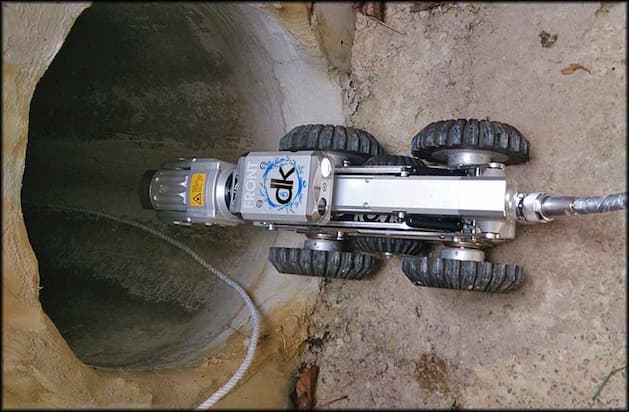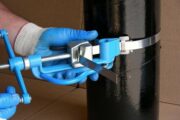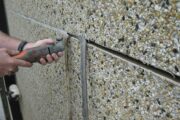An inspection camera is a tool that different types of industrial testers use to gather information about important objects. These kinds of cameras are also called industrial or digital cameras. Most of the time, cameras are used to look at something. During visual checks, testers use cameras to take pictures that show how an asset looks. But inspectors also gather other kinds of information such as size and temperature, and they use different kinds of inspection cams to do so.
Visual Inspection Camera

Without a doubt, an accurate and reliable inspection camera is one of the most common instruments used by inspectors to acquire visual data, regardless of industry. Even if it wasn’t designed for inspections specifically, a decent digital camera can be used for a variety of inspections. As a rule of thumb, you should commence with the data you require, then determine whether or not the camera you are contemplating can collect it.
Digital cameras vary widely in terms of quality and price, so it is essential to determine the level of image detail you require. Some options are capable of producing high-resolution images, while others render low-resolution pictures. The former are naturally more expensive, but they can provide the necessary details for closer examinations.
You should also ensure that the camera has a wide field of view (FOV) so you can capture all necessary details in a single frame. This is measured in terms of millimetres, and some digital cameras boast wide FOVs of up to 65 mm. The higher the FOV, the better for larger inspections.
Other factors such as the ability to work in low-light conditions and the need for high-quality colour may also influence your choice of a decent digital camera for use as an inspection instrument. The way the cameras connect to other devices is also a key consideration, with some models capable of connecting via Wi-Fi and others requiring USB cables.
Finally, ensure that you get a digital camera with intuitive software and user-friendly interfaces. This will make the process of preparing images for analysis easier, faster and more efficient. The digital camera you choose should also be robust enough to withstand the rigours of daily use.
Snake Cameras
When individuals use the term “inspection camera,” they are typically referring to a snake pipe camera. A snake camera is an extended robotic serpent or cable to which a miniature camera is connected and they may consist of wastewater models, pipe varieties, or borescopes. The primary difference between the various varieties of borescopes is the length of the wire and the image quality captured by the camera.
All of these names refer to the same type of camera, which is affixed to a long serpent and can be fed into a small space. However, you would not use a sewer inspection camera to see inside a vehicle engine; instead, you would use a borescope or snake camera.
However, you could use a snake camera or a pipe version to view the interior of a conduit. Although the design of these four camera types is essentially identical, a borescope is not designed for sewer applications, and a sewer inspection or pipe inspection camera is designed exclusively for wastewater inspections (either industrial—i.e., at the city level—or for home sewer pipe inspections). These devices are transportable units connected to a screen, ranging in length from 3 to 90 meters with a long serpent camera. Some are extremely durable, while others are designed for less demanding tasks.
Recently, these cameras have begun to include WiFi connectivity, enabling investigators to broadcast live video from the cameras on a tablet or smartphone. This feature can come in handy for domestic projects and in some industrial situations, but for commercial work, inspectors prefer to use the camera’s built-in screen.
Although digital inspection cameras are sometimes referred to as endoscopes, this usage is incorrect. In spite of this, some camera manufacturers have begun to refer to their digital inspection cameras as both endoscopes and borescopes, embracing the general confusion between the two categories of snake cameras.
Thermal Cameras

After visual data, thermal data is one of the most common forms of data an inspector may acquire with a pipe camera. Thermal data can help determine where heat may be escaping a structure, identify areas where heat may be escaping a roof, determine if a smouldering fire is still active, and locate where heat may be escaping from a confined industrial system. Consider that you may be able to locate a thermal inspection camera or other types of cameras with the sensor(s) you need to capture the data for your inspection.
Radiography Cameras
Using a radiography camera, examiners are able to acquire radiography images. These varieties of inspection cameras are utilised for radiography, one of the most prevalent NDT techniques. Typically, radiography cameras utilise one of two varieties of radiation.
The only time X-ray radiography devices (or cameras) emit radiation is when they are turned on. In large factories or warehouses, these devices are frequently used for examinations because they generate extremely clear images and are generally large. Investigate industrial radiography further.
Unlike X-ray devices, gamma ray radiography devices (or cameras) use radioactive material that is active within the device, so they emit radiation continuously. In the same way, they do not rely on power to function but rather use the emitted radiation to produce images.
Gamma-ray devices are more compact than X-ray devices, allowing examiners to examine smaller areas, such as the interiors of pipelines. Due to their constant emission of radiation, they must be shielded with a metal-based protective shield.

